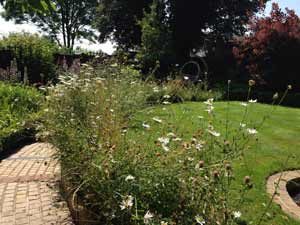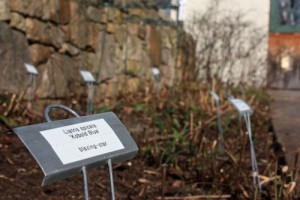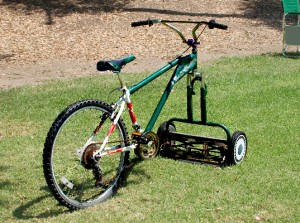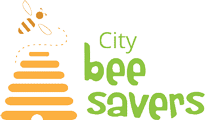 Not many years ago, cities were fining residents who pushed out the power mower to grow indigenous plants instead of grass. “Cleaver” homeowners were becoming wise to these prickly ordinances and starting placing label markers next to plant groupings like you’d see at your local arboretum. We now know acres of green grass are barren deserts to our pollinators and one of the contributors to their struggles. It always makes me chuckle reading about how resourceful some of these early adopters are as they strive to become part of the solution instead of continuing along this path of unsustainable green grass farming. Our pollinator group are just as resourceful and even more resilient; they respond brilliantly to restored habitat.
Not many years ago, cities were fining residents who pushed out the power mower to grow indigenous plants instead of grass. “Cleaver” homeowners were becoming wise to these prickly ordinances and starting placing label markers next to plant groupings like you’d see at your local arboretum. We now know acres of green grass are barren deserts to our pollinators and one of the contributors to their struggles. It always makes me chuckle reading about how resourceful some of these early adopters are as they strive to become part of the solution instead of continuing along this path of unsustainable green grass farming. Our pollinator group are just as resourceful and even more resilient; they respond brilliantly to restored habitat.
There has been a concerted effort among scientists and beekeepers to get the word out how important it is we start designing our properties and surrounding habitats so that it can support our struggling pollinators and honey bees.
Here are a few links to get you started on finding solutions for your lawn and community.
NASA has put together an easy to follow and comprehensive list of pollinator friendly plants best suited for your region: Plant list for your area
Here’s a fun look at the costs of your home grass farming operation: Cost of mowing
Another link about mowing: Mowing – Your Carbon Footprint 
Let us know about information you’d like to see presented here. We are always looking for ways to make a difference.
